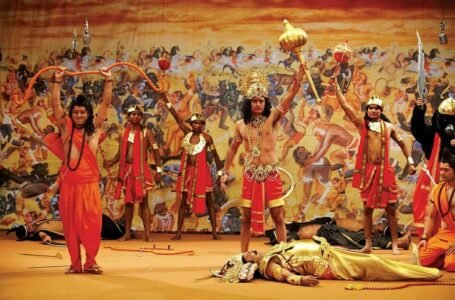Dakkebali: The World’s Most Powerful Snake Ritual

-Mili Joshi
Dakkebali: The World’s Most Powerful Snake Ritual
The Arabian Sea on one side splashes into the lap of the Western Ghats of India, where the tradition of Dakkebali unfolds in coastal regions with the entire ceremony so grand that spiritual seekers and enthusiasts of culture have been drawn to it for centuries. Dakkebali is a highly powerful and mesmerizing performance of snake worship proved to be one of the deepest links between humankind and the divine serpent forces governing the mysteries of nature.
The Sacred Geography of Serpent Worship
Dakkebali in itself is practically everything that applies to Tulunadu. In the heart of Tulunadu, Padubidri was a town located in the Udupi district of Karnataka, and this ritual is relegated to the Tulu-speaking community-age old traditions existing today far before history was recorded. Parashurama Kshetra is the holy geographical backdrop for one of the most intense spiritual experiences possible in India. Within this place stands the Sri Khadgeshwari Brahmasthana temple in Padubidri, the exact epicenter of this mystical tradition in which the realities of the worldly and the spiritual worlds melt. The very geography speaks about the potency of the rite.
These evergreen coastal plains, deep with sacred groves, have long been homes to the different varieties of serpents, especially the most revered of all – the cobra. Here, in this liminal space between land and sea, the ancient Tuluva people came to forge a much more sophisticated understanding of serpent worship that extends beyond superstition: it is a complex theological and ecotheological philosophy of living.
The Architecture of Rites: A Choreography of Sacred Powers
What characterizes Dakkebali as unique when compared with other snake-worship systems, however, is the universality it heralds in divine invocation. Dakkebali is, in fact, a multi-dimensional rite-holding which offered not only to the Naga (the snake deity) but also to the whole divine pantheon of cosmic forces. Worship of Naga, Bramha, Raktheshwari, Nandikonna, Haygulli, Kshetrapala, Bagilu Bobbarya, Motukalu Bobbarya, and Yakshi takes place in the ceremony-that hence calls into being a spiritual ecosystem in which serpent energy entwines with those of other divinities.
The rite alternates biennially with that of the famous Paryaya festival of nearby Udupi. This is only because, in the philosophical sense, the movement from time to time goes hand in hand with the deep astronomical and agricultural wisdom of Tulu culture. It usually runs from January (Makara maasa) through several weeks, with the most intense period correlating with specific phases in lunar time when the energy of serpents is believed to reach its peak.
The Dance of Divine Possession: Pathri and Nagakannika
The most dramatic of these aspects of Dakkebali is perhaps in the offerings to what is arguably the most extraordinary spiritual phenomenon in world religion: the ritualistic possession and guidance of devotees trying to wriggle their way out of the heat through a serpentine dance. Central to this process is the Pathri, a well-trained human agent who becomes a host for serpent consciousness. The possessed Pathri, advised under the control of the Nagakannika (literally, “serpent maiden”), engages in circular rhythmic dance in the worship premises.
The dance itself is not performative-it is an actual channeling of human form by Naga consciousness. Such movements, evoking interpretation and watching, imitate sinuous flows of serpent energy into visual, even mystical, representations of the Hindu cosmic serpent that supports the universe. The audience now appears to witness the harmonic union of male and female serpent energies, an all-collapsing cosmic dance which maintains natural balances.
The important issue, really, is the benefit of the Nagakannika, who stands both as a shield for, and guide to the possessed Pathri, while even emphasizing the most important role the Pathri has in the entire exercise. Her wisdom of serpent tales, ritual methods, and spiritual safeguards makes her an important figure in the ceremony. That communion between Pathri and Nagakannika represents ancient wisdom on the careful channeling and containment of energy within divine contexts for the safety of both parties as well as observers.
The Sacred Procession: Pude and Community Participation
The Dakkebali interlinks individual and shared kairos into a pilgrimage of a whole community. The procession is one of the finest spectacles, where offerings called ‘Pude’ in the Tulu language are made by the devotees from the famed Maha Ganapathi temple at Padubidri to the Brahmasthana. The procession, over a kilometer in length, turns the streets into an esoteric river of devotion heading toward the serpent shrine.
The Pude offerings symbolize much more than that; they embody the prayers, good wishes, and spiritual intentions of the devotees. Prepared with some specific ingredients and blessed through preliminary rituals, these offerings, therefore, represent a concrete intersection between the individual devotee’s spiritual rambling and the serpent consciousness at a cosmic level. The collective sight of hundreds of devotees carrying these sacred offerings instills the atmosphere with reverent energies that build the spiritual strength of the ritual.
Theological Foundations: Nagaradhane and Cosmic Serpent Wisdom
To get to the bottom of what Dakkebali can really do, we need to place it within the larger tradition of Nagaradhane-serpent worship that sees cobras not merely as gods, but as manifestations of cosmic principles. In Hindu cosmology, the serpent symbolizes creation and destruction, the dormant Kundalini energy at the base of human consciousness and, in fact, is the very principle that sustains the cosmos.
Emerging from these theological nuances is the understanding of Nagaradhane as environmentally conscious. Practitioners view serpents as integral to restoring nature’s equilibrium, deserving consideration and protection for “multiple social, religious and ecological reasons”. This is not just some primitive form of animal worship, but a whole framework of thinking about interspecific relationships and the care of the environment, which modern ecology is just starting to understand.
Parallel traditions involving Lord Vishnu and the cosmic serpent Adishesha, and Lord Shiva with the snake ornamentation provide a mythological framework for considering serpent consciousness as divine consciousness. Dakkebali, in this understanding, is therefore no longer just snake worship but communion with the fundamental creative forces of the Universe.
The Mystical Experience: Transformation through Terror and Awe
Participants and spectators of Dakkebali consistently report experiences that extend beyond the sphere of normal consciousness. The atmosphere for altered states of consciousness is set by the intrinsic spiritual atmosphere stimulated by the harmonious interaction of drumming, chanting, and dancing. The most extraordinary manifestations are exhibited by the possessed Pathri, who expresses knowledge and psychic abilities thought impossible, speaks from several voices, and displays unnatural insight into the hidden realms of the life of the participants.
This transformative effect is rooted in the ritual’s touch upon what Jung would perhaps refer to as the collective unconscious: those profound psychological and spiritual patterns linking all of humanity’s experience. Commonly viewed as one of the most ancient and powerful symbols in existence, the serpent archetype leads a direct pathway to probing into these incredibly deep psychological realms.
The terror and awe called forth by serpent images serve a definite spiritual function. By forcing participants, with their deepest fears and most primitive reactions, to go beyond common consciousness to heightened spiritual awareness, the entire activity becomes therapeutic. This is not casual spirituality but serious inner work that can evoke lasting psychological and spiritual transformation.
Cultural Preservation and Modern Relevance
In this day and age of rapid modernization and cultural homogenization, Dakkebali stands for that which is irreplaceable and unforgettably a living link to humanity’s shamanic past, of which the modern society needs a brilliant sharing of insight into consciousness, ecology, and community. The Tuluva community’s efforts in keeping the tradition alive against all odds testify to how deeply it is valued by the living participants.
The teachings on environmental balance, community empowerment, and direct experience underpinning the Dakkebali ritual offer valuable lessons for today’s searchers of spirituality. Unlike many contemporary spiritual practices that promote the individual’s enlightenment, Dakkebali serves to point out how a person’s inward development could better the community and help with ecological balance.
Conclusion: The Eternal Dance of Consciousness
Dakkebali stands as perhaps the greatest snake ritual in the world, not for its spectacular outer manifestations, but profoundly for its capacity to link and fuse human consciousness with the primal forces that govern existence. The Pathri possessed and the serpentine dance are community acts of pilgrimage, and therein lie the eternal quest of humanity to understand and harmonize with the mysterious forces that shape this world through the careful distillation of ancient wisdom.
Dakkebali stands rare and precious for whoever seeks real spiritual experience in a world increasingly manufactured. It is an immediacy with the divine that transforms both the nature of individual consciousness and the life of the community. And it remains a huge reminder of what is possible when human beings approach the sacred with the proper reverence, courage, and wisdom.
The ancient Karanas of Karnataka temples still breathe with life in the recent past offering the world glimpses of spiritual technologies-conversion technologies honed by our ancestors-and as relevant as they were thousands of years ago.


